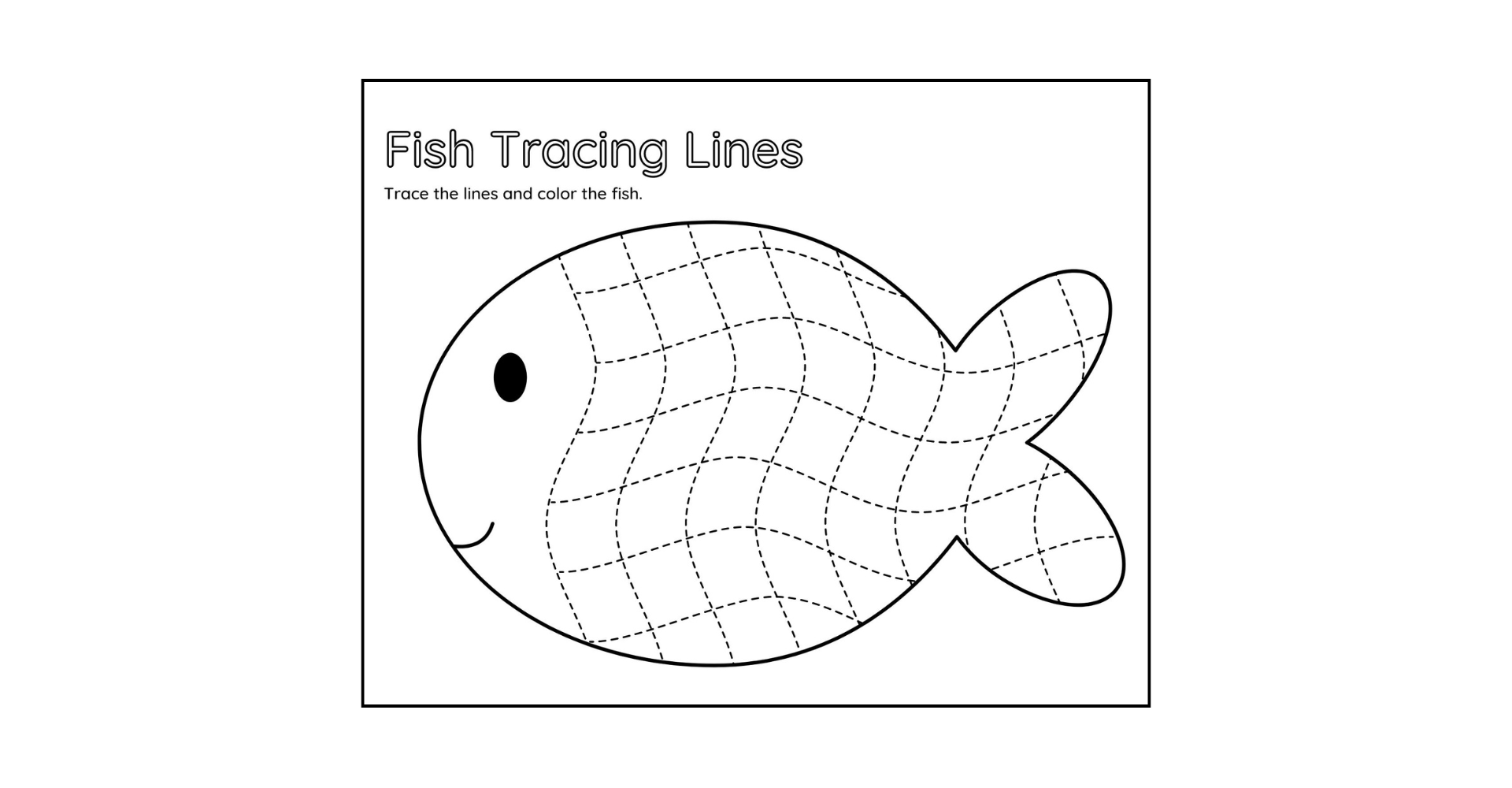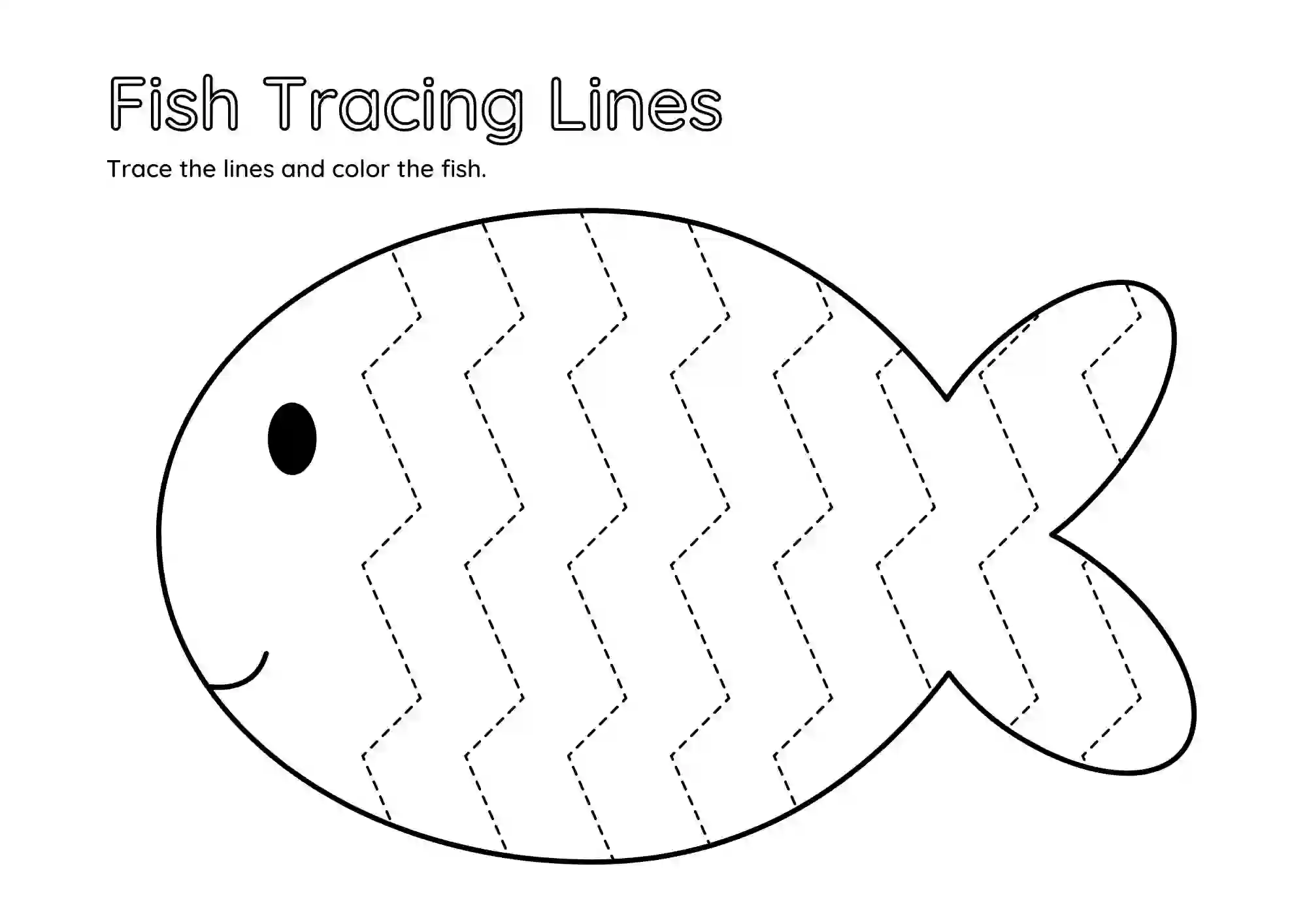Get our new “Fish Tracing Lines Worksheets,” made for kindergarten-aged children. With this set of 11 worksheets, your kid will discover large fish with different scale patterns, encouraging them to trace with excitement, twists, and delightful discoveries.
Fish Tracing Lines Worksheets Details:
| Feature | Details |
|---|---|
| Format | Downloadable PDF |
| Number of Pages | 11 |
| Content | Fish Tracing Lines Worksheets For Kindergarten and Nursery |
| Illustrations | Yes, playful and age-appropriate |
| Suitable For | Nursery, Lkg & Ukg |
| Printable? | Yes |
Learning Objectives:
- Getting Better with Fingers: By tracing the twisty, turny lines on fish scales, kids improve their fingers. This helps them improve their fingers.
- Getting Ready to Write: Doing tracing will help kids get ready for writing later. They get to practice with holding pencils or crayons and making simple shapes and lines.
- Seeing Things Clearly: Exploring all the cool designs on fish scales helps kids get better at seeing things and figuring them out. It’s like playing a game of “I Spy” but with fish scales! This helps them a ton as they grow up.
Who is this for?: These Worksheets are suitable for the children in LKG, UKG, Nursery, preschool, and kindergarten, providing adaptable activities suitable for learning.
Materials Needed:
- Printed Copies of the Worksheets: Download and print the Fish Tracing Lines Worksheets.
- Writing Materials: Crayons, markers, or colored pencils.
How to Use:
- Introduction to Tracing:
- Introduce kids to tracing. Talk about how tracing means following lines carefully, just like finding your way through a maze.
- Demonstration:
- Show them how it’s done! Guide them through tracing a few fish scales or shapes. Make sure to highlight the importance of holding the pencil properly and moving their hands steadily.
- Independent Exploration:
- Give them worksheets and let them try them on their own. Be there to help if they need it. This helps them feel confident and independent.
- Sharing:
- Wrap up the activity with a little chat. Let the kids share their favorite fishy creations and celebrate their hard work and show their finished worksheets to others.
Tips:
- Try Different Lines: Give your kids various lines to trace, like straight ones, wavy ones, zigzags, and loops. This way, you’re offering options that suit different abilities and preferences. Get this type of tricky lines worksheet here.
- Use Special Tools: Give them tools like pencil grips, tracing stencils, or textured surfaces. These aids can be a big help for kids who struggle with holding a pencil or tracing accurately.
- Get Sensory: Make tracing fun and memorable by adding sensory elements. Try activities like tracing in sand or shaving cream. These hands-on experiences not only engage kids but also appeal to those who learn best through touch.
Additional Activities:
- Fishy Art Project: Let’s do a project on fish. They can use stuff like paper, paint, and craft supplies to craft fish. And talk about different kinds of fish and what makes each one special.
- Story Session: Take a dive into imagination with a special storytime. Pick out books all about the ocean and its creatures, and read them aloud to the kids. Afterwards, let them act out their favorite underwater tales. It’s a fantastic way to explore the deep blue sea from the comfort of your own home or classroom.
Download the PDF File Here:
Click To Download the Fish Tracing Lines Worksheets PDF
How to Print:
- Get the PDF: Start by clicking the link to download the PDF files of the worksheets.
- Set up Printing: Make sure your printer is all setup. You can adjust the settings like paper size, whether it’s portrait or landscape, and how clear you want the print to be.
- Check Before You Print: Take a print preview. To make sure everything looks just right before you hit print.
- Print: Once you’re happy with how it looks, go ahead and hit that print button.
Tips for Parents and Educators:
- Cheerleading: Shower your kids with words of encouragement and heaps of praise. Let them know how awesome they’re doing to keep their spirits high while they’re tracing away.
- Show and Tell: Give them an example by showing them the ropes of tracing. Demonstrate those nifty techniques and show off the proper way to hold a pencil.
- Patience Pays Off: Create a nice and patient atmosphere where mistakes are totally okay. Encourage them to keep going even when things get a bit tricky. Remember, Rome wasn’t built in a day!
Common Mistakes and Solutions:
- Holding Too Tight: Sometimes kids squeeze their pencils too hard, which can tire them out and make their hands ache. Help them find a comfortable, loose grip on the pencil, and remind them to take breaks now and then to relax those muscles.
- Losing Interest: It’s natural for little ones to get bored or distracted while tracing. To keep them hooked, break the tracing tasks into smaller, more manageable chunks. Give them some fun challenges or questions along the way to keep their minds engaged.
- Struggling with Tough Lines: Some kids might hit a roadblock when it comes to tracing tricky shapes or patterns. Offer them a helping hand by breaking down those complex designs into simpler parts. Give them plenty of practice with guidance, so they can build up their skills gradually.
Love from LkgWorksheets!











